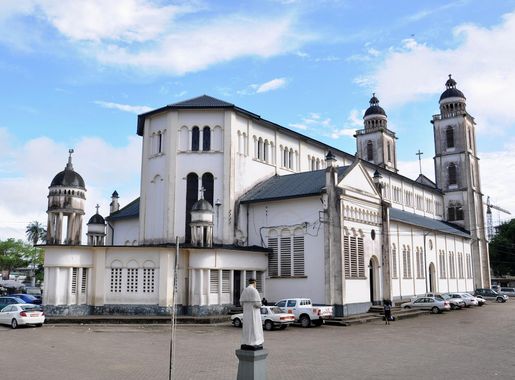
Bonapriso: The Heartbeat of Douala's Elegance
Experience the elegance of Bonapriso, Douala's upscale neighbourhood, where modernity meets rich cultural heritage, vibrant art scenes, diverse cuisine, and lively nightlife.
Bonapriso, located in Douala, Cameroon, is a captivating neighbourhood that seamlessly blends modernity with rich cultural heritage. Known for its upscale aura, Bonapriso is a haven for tourists seeking both comfort and an authentic Cameroonian experience. The area is lined with tree-shaded streets and chic cafes, perfect for a leisurely afternoon stroll or a delightful culinary adventure. One of the standout features of Bonapriso is its vibrant art scene. The neighbourhood is home to several galleries showcasing contemporary African art, making it a must-visit for art enthusiasts. The local markets are equally enticing, offering an array of handmade crafts and unique souvenirs that reflect the region's cultural diversity. Additionally, Bonapriso's proximity to Douala's central business district makes it a strategic location for tourists who wish to explore the city's economic hub. Food lovers will find Bonapriso particularly appealing. The neighbourhood boasts a variety of restaurants that serve an eclectic mix of local and international cuisines. Whether you're in the mood for traditional Cameroonian dishes or gourmet French cuisine, Bonapriso has something to satisfy every palate. The nightlife here is equally vibrant, with numerous bars and lounges that offer a lively atmosphere long into the night.
Local tips in Bonapriso
- Visit the local art galleries to explore contemporary African art.
- Take a leisurely stroll down the tree-shaded streets for a relaxing afternoon.
- Don't miss the local markets for unique handmade crafts and souvenirs.
- Try a mix of local and international dishes at the diverse restaurants.
- Experience the vibrant nightlife by visiting the local bars and lounges.
Bonapriso: The Heartbeat of Douala's Elegance
Bonapriso, located in Douala, Cameroon, is a captivating neighbourhood that seamlessly blends modernity with rich cultural heritage. Known for its upscale aura, Bonapriso is a haven for tourists seeking both comfort and an authentic Cameroonian experience. The area is lined with tree-shaded streets and chic cafes, perfect for a leisurely afternoon stroll or a delightful culinary adventure. One of the standout features of Bonapriso is its vibrant art scene. The neighbourhood is home to several galleries showcasing contemporary African art, making it a must-visit for art enthusiasts. The local markets are equally enticing, offering an array of handmade crafts and unique souvenirs that reflect the region's cultural diversity. Additionally, Bonapriso's proximity to Douala's central business district makes it a strategic location for tourists who wish to explore the city's economic hub. Food lovers will find Bonapriso particularly appealing. The neighbourhood boasts a variety of restaurants that serve an eclectic mix of local and international cuisines. Whether you're in the mood for traditional Cameroonian dishes or gourmet French cuisine, Bonapriso has something to satisfy every palate. The nightlife here is equally vibrant, with numerous bars and lounges that offer a lively atmosphere long into the night.
Iconic landmarks you can’t miss
Rond-Point Deido
Discover the vibrant history and culture at Rond-Point Deido, a lively landmark in Douala, Cameroon, perfect for immersing in local traditions.

Maison H
Discover the flavors of Cameroon at Maison H, a vibrant restaurant in Douala offering delightful local and international cuisine.
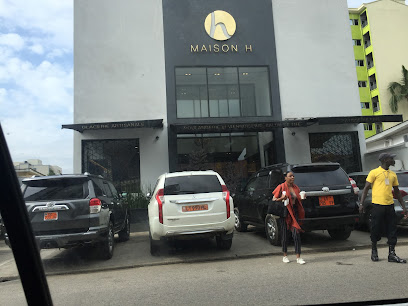
Cathedral of St Peter and Paul Bonadibong
Explore the stunning architecture and rich spiritual heritage of the Cathedral of St Peter and Paul Bonadibong in Douala, a must-visit destination for tourists.

Hôtel La Falaise Bonapriso
Experience luxury and comfort at Hôtel La Falaise Bonapriso, your perfect getaway in the heart of Douala, Cameroon.
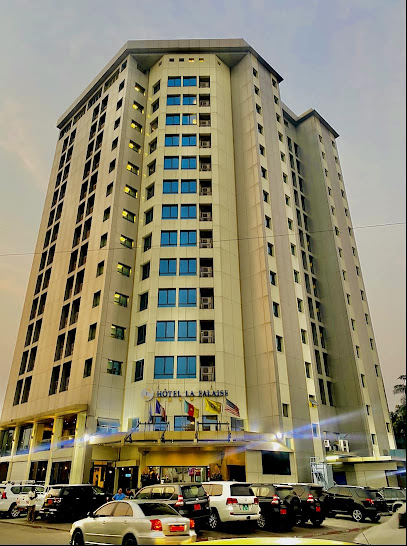
Stardust
Experience the vibrant nightlife of Douala at Stardust, a bar where fun, music, and delicious drinks come together for an unforgettable evening.
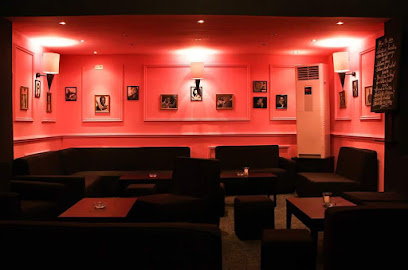
Maritime Museum Of Douala
Explore Douala's maritime heritage at the Maritime Museum, showcasing the rich nautical history and cultural significance of Cameroon.
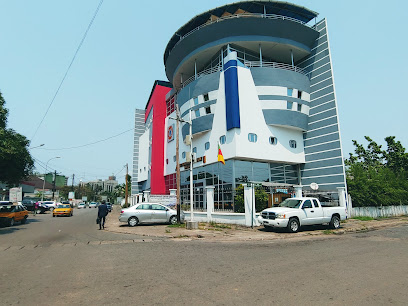
Doual'art
Immerse yourself in the creative heart of Douala at Doual'art, showcasing contemporary art and cultural exhibitions from Cameroon and beyond.

PLACE SAINT DAVID
Discover the cultural heart of Douala at Place Saint David, a vibrant festival hall offering live music, exquisite dining, and unforgettable events.
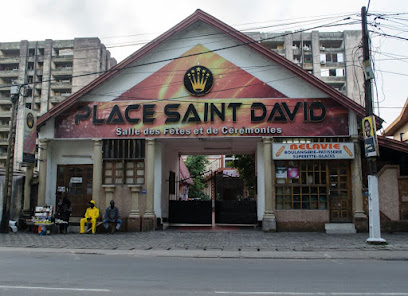
Le Discophage, Douala
Experience the vibrant nightlife of Douala at Le Discophage, a lively bar with an extensive drink menu and a welcoming atmosphere.
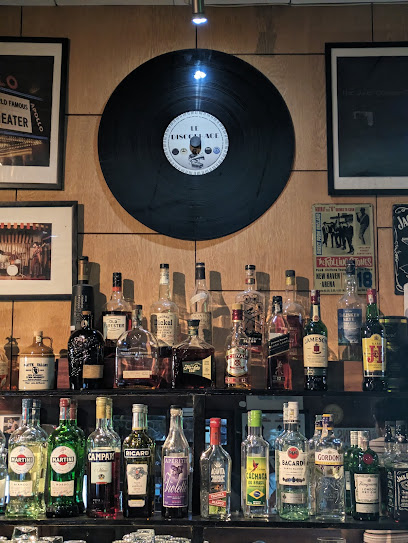
Monument Du Cinquantenaire De L'armée
Discover the historical significance and architectural beauty of the Monument Du Cinquantenaire De L'armée, a must-see landmark in Douala, Cameroon.
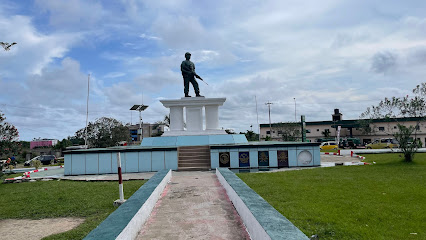
La Cave Des Bâtisseurs
Experience Douala's nightlife at La Cave Des Bâtisseurs, where great drinks and vibrant atmosphere come together for an unforgettable evening.
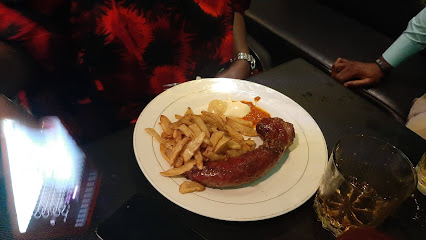
La Nouvelle Liberté
Explore La Nouvelle Liberté, Douala's iconic monument celebrating freedom and the rich cultural heritage of Cameroon.
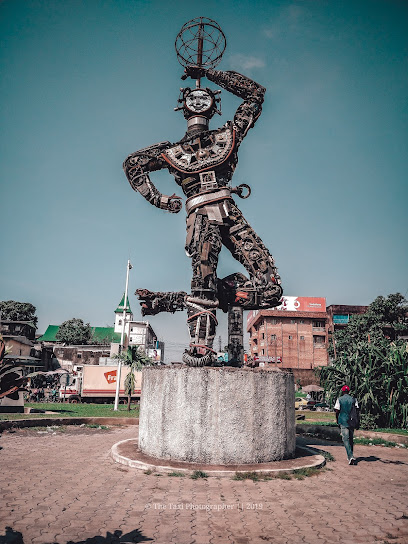
La Pagode
Explore La Pagode in Douala, a historical landmark that beautifully blends architecture and cultural heritage, showcasing the essence of Cameroon.
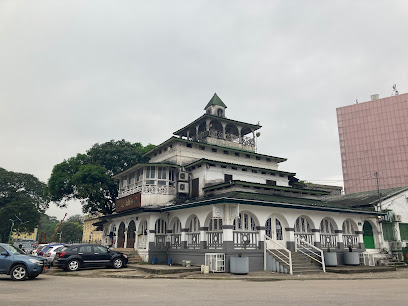
Ancienne Residence du Chef de Circonscription
Explore the rich history and architectural beauty of Douala at the Ancienne Residence du Chef de Circonscription, a remarkable historical landmark.
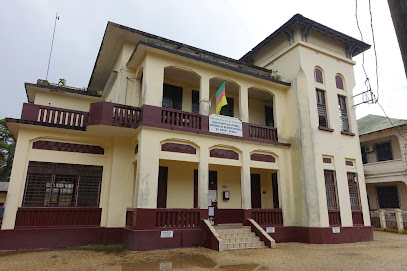
Bonapriso
Discover the administrative essence of Douala at Bonapriso, where local governance meets vibrant community life in the heart of Cameroon.
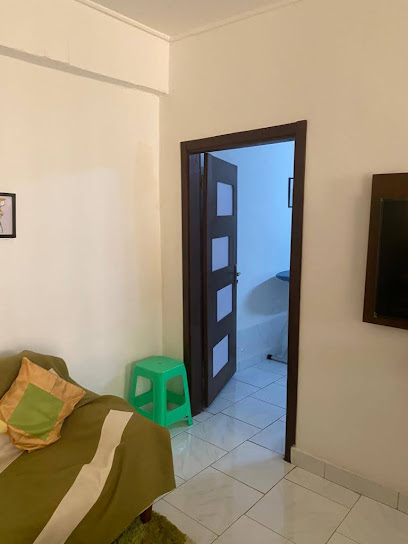
Unmissable attractions to see
Carrefour Eto’o
Experience the vibrant culture and culinary delights at Carrefour Eto’o, Douala's premier tourist attraction for shopping and local cuisine.
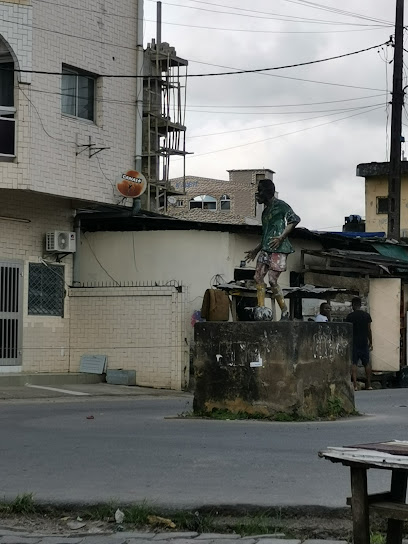
Cameroun Douala
Explore Douala: A vibrant city blending rich culture, delicious cuisine, and stunning coastal views in the heart of Cameroon.
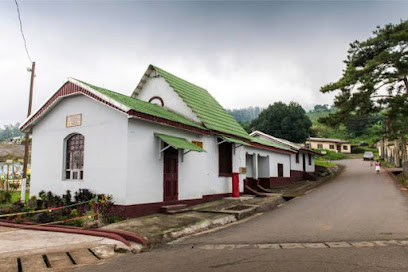
ILE DE MANOKA
Explore the serene beauty and vibrant culture of Île de Manoka, a hidden island gem near Douala, perfect for adventure and relaxation.
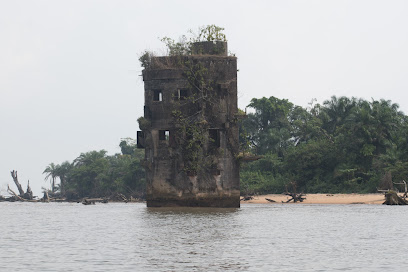
Wonder Park
Discover the lush landscapes and family-friendly atmosphere of Wonder Park in Douala, a peaceful retreat in the heart of the city.

Akwa/Bonanjo vue aérienne
Discover the stunning aerial views of Akwa and Bonanjo in Douala, a vibrant city blending urban life with breathtaking landscapes.
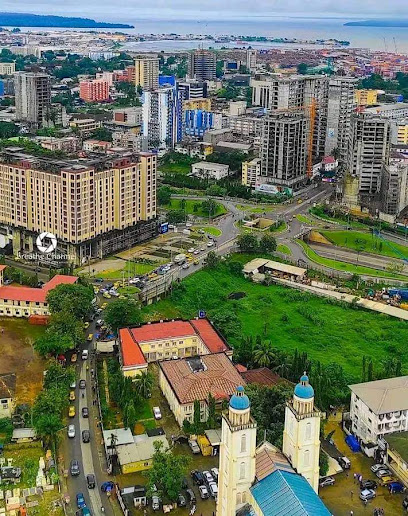
Entree babylone
Discover the vibrant culture and rich artistic heritage at Entree Babylone, a must-visit tourist attraction in Douala, Cameroon.
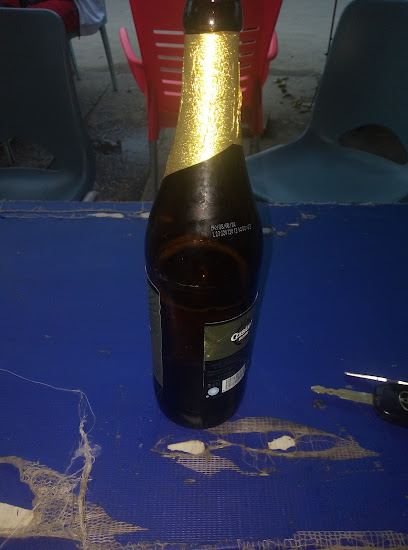
Essential places to dine
Maison H
Discover the vibrant flavors of Cameroon at Maison H, where local and international cuisines come together in an inviting atmosphere.
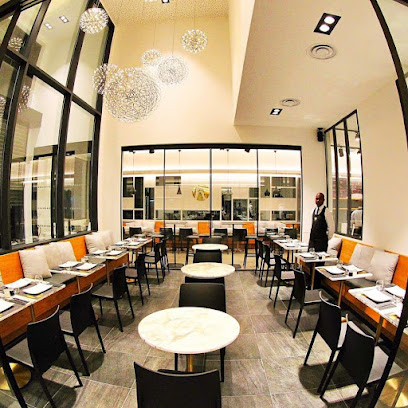
White House Restaurant
Experience authentic Cameroonian cuisine at White House Restaurant in Douala - where local flavors meet vibrant dining.
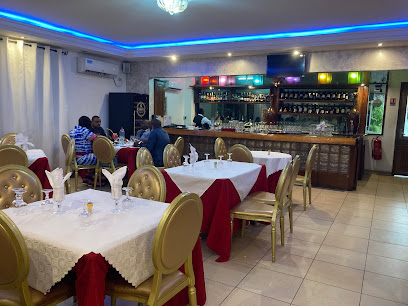
LA MARQUISE RESTAURANT
Experience authentic Cameroonian cuisine fused with international flavors at La Marquise Restaurant in Douala.
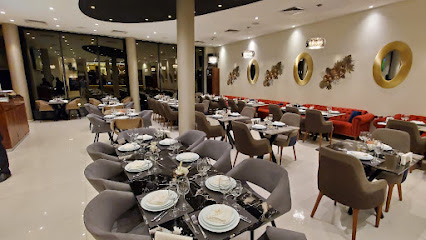
Le Bistrot Latin
Discover the vibrant flavors of Douala at Le Bistrot Latin - where culinary tradition meets modern taste in a lively atmosphere.
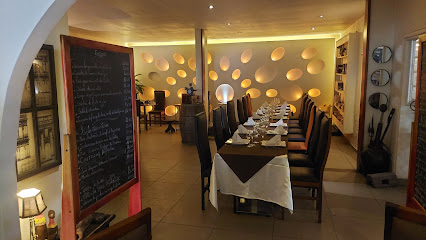
ANATOLIA RESTAURANT
Experience authentic Turkish cuisine at Anatolia Restaurant in Douala—where every dish tells a story of flavor and tradition.
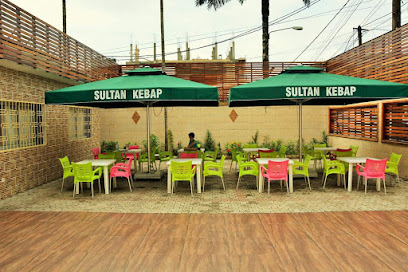
Restaurant A La Broche
Experience authentic Cameroonian barbecue at Restaurant A La Broche in Douala - where every bite tells a story.
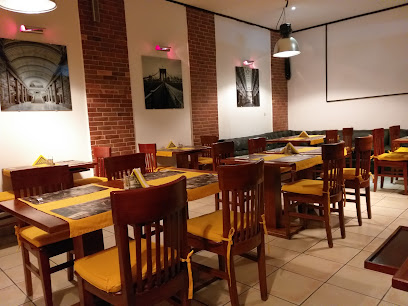
Impala Restaurant by H Academy, Bonapriso
Experience authentic Cameroonian cuisine at Impala Restaurant by H Academy in Bonapriso - where tradition meets taste.

Restaurant la chaumière
Experience authentic Cameroonian flavors at Restaurant la Chaumière in Douala – a culinary journey filled with warmth and local charm.
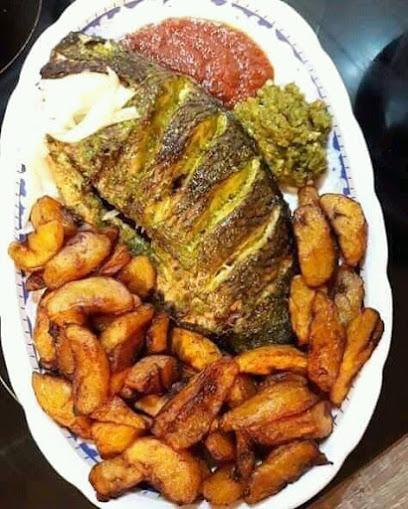
Restaurant le Refuge
Discover the exquisite flavors of Cameroon at Restaurant le Refuge in Douala – where tradition meets modern cuisine.

Restaurant Ambassade Gourmet
Discover exquisite local and international cuisine at Restaurant Ambassade Gourmet in Douala – a must-visit dining destination.
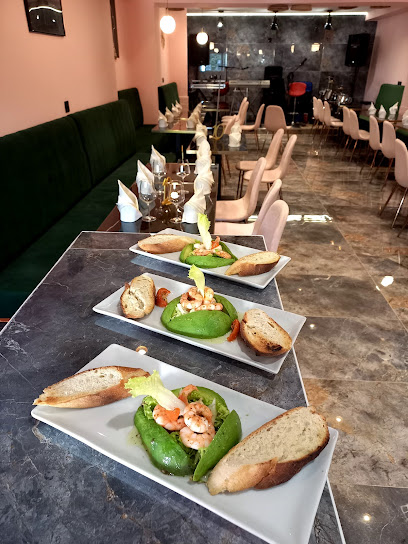
Markets, malls and hidden boutiques
Super U - Kadji Square
Explore Super U - Kadji Square in Douala for a diverse selection of clothing, accessories, and local fashion trends catering to all ages and styles.
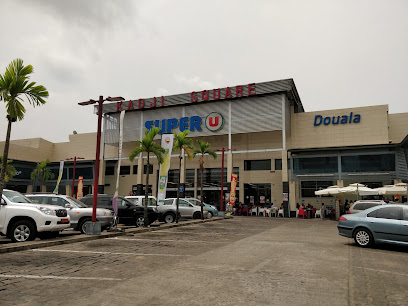
Boutique Sol's a Douala - Cameroon
Discover unique local fashion at Boutique Sol's in Douala, Cameroon, where vibrant styles meet cultural heritage in a welcoming atmosphere.

GO Sport, Bonapriso
Explore a wide range of high-quality sporting goods at GO Sport, Bonapriso—your go-to store in Douala for all things sports.
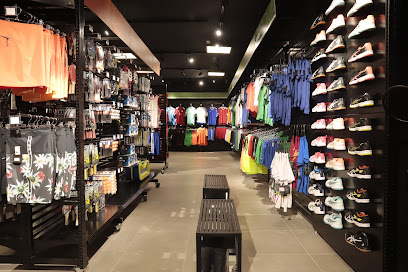
HUAWEI BONAPRISO
Explore cutting-edge technology at HUAWEI BONAPRISO, Douala's premier electronics destination for smartphones, laptops, and more.
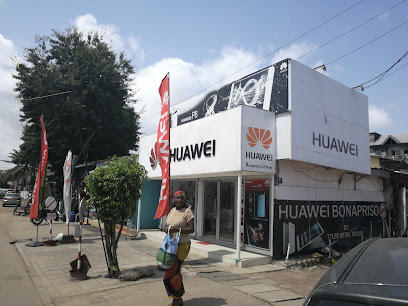
African Soul Market
Explore the African Soul Market in Douala for unique gifts and gourmet delights that showcase the heart of Cameroonian culture.
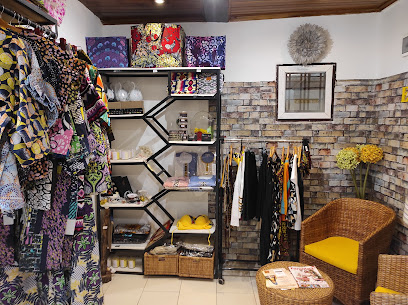
HOUSE OF KATE
Explore contemporary fashion at House of Kate, Douala's top clothing store with stylish selections and affordable prices for every tourist.
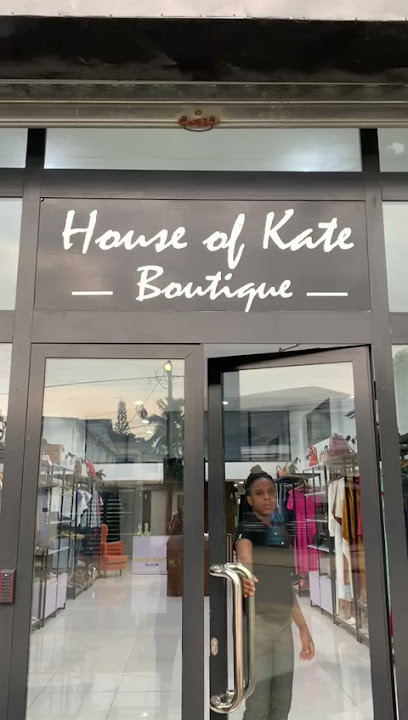
Pexiy Couture
Explore the vibrant styles of Pexiy Couture in Douala, where local craftsmanship meets contemporary fashion.

Shopglamour
Discover the latest fashion trends at Shopglamour in Douala, where style meets affordability in a vibrant shopping atmosphere.
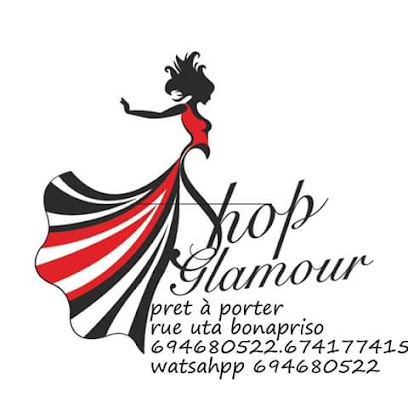
Nakuin store
Explore the stylish offerings at Nakuin Store in Douala, where local flair meets contemporary fashion in a vibrant shopping atmosphere.

Jubilate fanion store
Explore local fashion at Jubilate Fanion Store in Douala, where vibrant styles and unique designs meet Cameroonian culture.
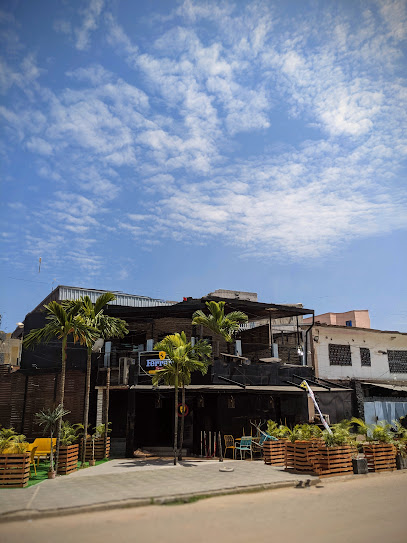
Essential bars & hidden hideouts
Stardust
Experience the vibrant nightlife of Douala at Stardust, a premier bar offering exquisite drinks and a lively atmosphere perfect for socializing.
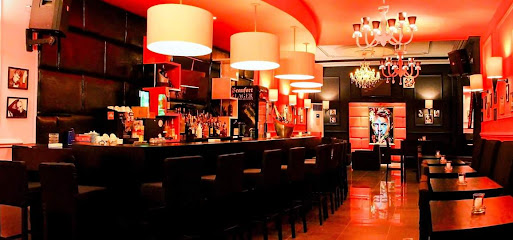
BE BOP
Discover BE BOP, Douala's premier cocktail bar, where vibrant nightlife meets creative mixology in a lively and welcoming atmosphere.
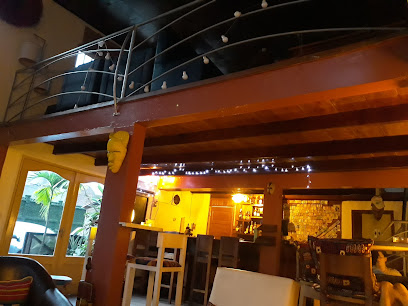
Lynk
Discover the vibrant atmosphere at Lynk, Douala's premier bar and lounge, where exquisite drinks and delightful cuisine create unforgettable moments.
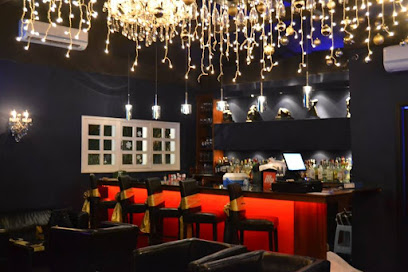
WANTED LOUNGE
Experience vibrant nightlife at WANTED LOUNGE in Douala, where delicious drinks and a lively atmosphere await you.
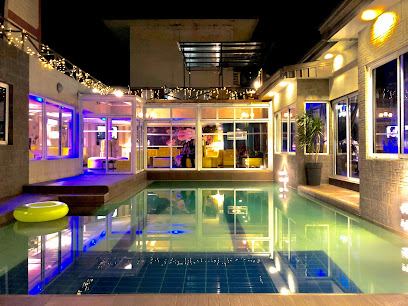
La Bretonne
Experience the vibrant nightlife of Douala at La Bretonne, where lively music, delicious drinks, and a welcoming atmosphere await.
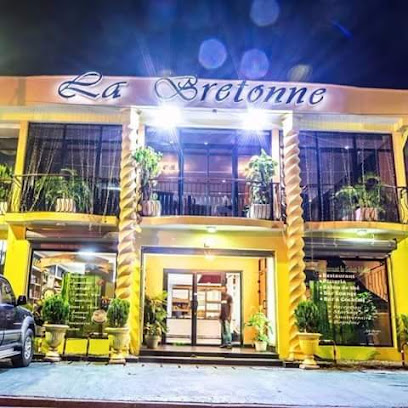
La Cave Des Bâtisseurs
Experience the vibrant nightlife of Douala at La Cave Des Bâtisseurs, where local culture meets a lively bar atmosphere.
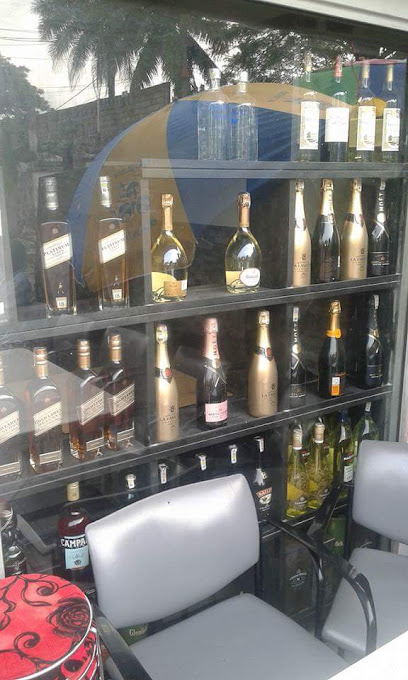
Therapy lounge
Discover the vibrant atmosphere of Therapy Lounge in Douala, where relaxation meets local culture for an unforgettable experience.
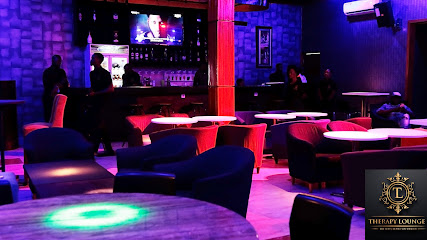
Bar A Tapas
Savor the vibrant flavors and lively atmosphere of Bar A Tapas in Douala, where every bite is a celebration of Spanish culinary traditions.
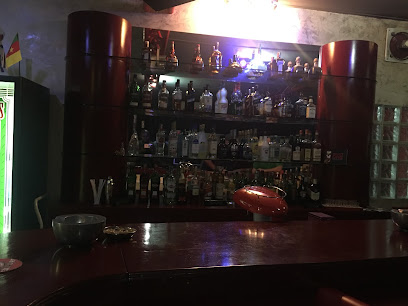
La Cubaine by GIRONDE
Discover the exquisite flavors of wine at La Cubaine by GIRONDE, a cozy wine bar in Douala perfect for relaxation and socializing.
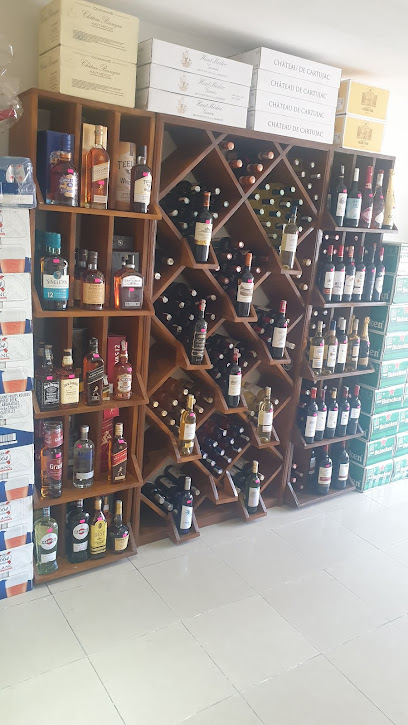
PUB CAFE BELLISSIMA
Discover the lively charm of Pub Cafe Bellissima in Douala, where local culture meets a relaxed bar atmosphere, perfect for unwinding after your adventures.
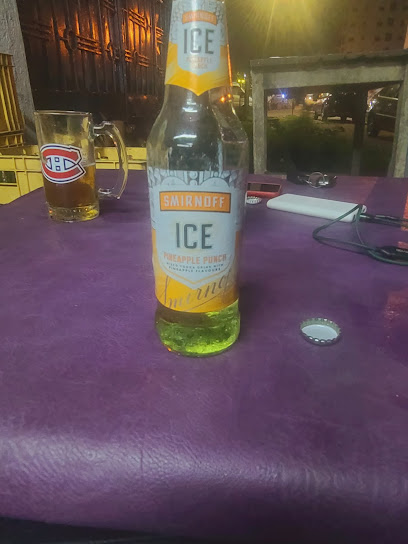
Local Phrases
-
- HelloBongu
[Bon-goo] - GoodbyeAdieu
[Ah-dyur] - YesOui
[Wee] - NoNon
[Non] - Please/You're welcomeS'il vous plaît/De rien
[Seel voo pleh/Duh ryen] - Thank youMerci
[Mehr-see] - Excuse me/SorryPardon/Désolé
[Pahr-dohn/Day-zoh-lay] - How are you?Comment ça va?
[Koh-mohn sah vah] - Fine. And you?Bien. Et toi?
[Byen. Ay twah] - Do you speak English?Parlez-vous anglais?
[Pahr-lay voo ahn-glay] - I don't understandJe ne comprends pas
[Zhuh nuh kohm-prahnd pah]
- HelloBongu
-
- I'd like to see the menu, pleaseJe voudrais voir le menu, s'il vous plaît
[Zhuh voo-dray vwar luh meh-noo, seel voo pleh] - I don't eat meatJe ne mange pas de viande
[Zhuh nuh mahnj pah duh vyand] - Cheers!Santé!
[San-tay] - I would like to pay, pleaseJe voudrais payer, s'il vous plaît
[Zhuh voo-dray pay-ay, seel voo pleh]
- I'd like to see the menu, pleaseJe voudrais voir le menu, s'il vous plaît
-
- Help!Au secours!
[Oh suh-koor] - Go away!Allez-vous en!
[Ah-lay vooz ahn] - Call the Police!Appelez la police!
[Ah-puh-lay lah poh-lees] - Call a doctor!Appelez un médecin!
[Ah-puh-lay uh meh-duh-sahn] - I'm lostJe suis perdu
[Zhuh swee pair-doo] - I'm illJe suis malade
[Zhuh swee mah-lahd]
- Help!Au secours!
-
- I'd like to buy...Je voudrais acheter...
[Zhuh voo-dray ah-shuh-tay] - I'm just lookingJe regarde juste
[Zhuh ruh-gahrd zhust] - How much is it?Combien ça coûte?
[Kohm-byen sah koot] - That's too expensiveC'est trop cher
[Say troh shair] - Can you lower the price?Pouvez-vous baisser le prix?
[Poo-vay voo bay-say luh pree]
- I'd like to buy...Je voudrais acheter...
-
- What time is it?Quelle heure est-il?
[Kell ur ay eel] - It's one o'clockIl est une heure
[Eel ay oon ur] - Half past (10)Dix heures et demie
[Dees ur ay deh-mee] - MorningMatin
[Mah-tan] - AfternoonAprès-midi
[Ah-pray mee-dee] - EveningSoir
[Swah] - YesterdayHier
[Yehr] - TodayAujourd'hui
[O-zhoor-dwee] - TomorrowDemain
[Duh-man] - 1Un
[Oon] - 2Deux
[Duh] - 3Trois
[Twah] - 4Quatre
[Kat] - 5Cinq
[Sank] - 6Six
[Sees] - 7Sept
[Set] - 8Huit
[Wee-eet] - 9Neuf
[Nuff] - 10Dix
[Dees]
- What time is it?Quelle heure est-il?
-
- Where's a/the...?Où est...?
[Oo ay] - What's the address?Quelle est l'adresse?
[Kell ay lah-dress] - Can you show me (on the map)?Pouvez-vous me montrer (sur la carte)?
[Poo-vay voo muh mohn-tray (soor lah kart)] - When's the next (bus)?Quand est le prochain (bus)?
[Kahnd ay luh proh-shahn (bus)] - A ticket (to ....)Un billet (pour ....)
[Oon bee-lay (poor)]
- Where's a/the...?Où est...?
History of Bonapriso
-
Bonapriso, situated in Douala, holds historical significance as part of the coastal city that was heavily influenced during the colonial period. Initially inhabited by the Duala people, the area began to transform in the late 19th century when German colonizers established trading posts, which facilitated the export of palm oil and rubber. This period marked the beginning of significant European influence on local culture and economy.
-
As Douala grew into a central hub for trade in Central Africa, Bonapriso evolved alongside it. The establishment of the port of Douala in the late 1800s made the area an important commercial center. The influx of traders and immigrants from various regions contributed to a melting pot of cultures, leading to the development of a unique local identity characterized by diverse languages, cuisines, and traditions.
-
After Cameroon gained independence in 1960, Bonapriso experienced urbanization and growth as it became a focal point for economic activities. The neighborhood saw the construction of modern infrastructures such as schools, hospitals, and markets, reflecting the aspirations of a newly independent nation. This period marked a significant shift in the cultural landscape, blending traditional practices with modern influences.
-
Today, Bonapriso is celebrated for its cultural diversity, where various ethnic groups coexist and celebrate their heritage. The neighborhood hosts numerous cultural festivals and events that highlight traditional music, dance, and art. The vibrant markets, such as the Bonapriso Market, are a testament to the area's bustling commercial activity and serve as a gathering point for the community.
-
In recent years, Bonapriso, like many urban neighborhoods in Douala, has faced challenges such as rapid population growth and urbanization. Issues such as inadequate infrastructure and housing shortages have emerged. However, local initiatives aimed at community development and cultural preservation continue to play a pivotal role in maintaining the neighborhood's unique character amidst modern challenges.
Bonapriso Essentials
-
Bonapriso is easily accessible from other neighbourhoods in Douala. The most convenient way to reach Bonapriso is by taxi or motorcycle taxi (benskin). If coming from the Douala International Airport, a taxi ride will take approximately 20-30 minutes. For those in the city center, local buses and shared taxis (clando) frequently operate routes to Bonapriso, which is about a 15-minute ride.
-
Bonapriso is a walkable neighbourhood, and many shops, restaurants, and attractions are within easy reach on foot. For longer distances, motorcycle taxis are a popular choice and provide quick transport. Local buses and shared taxis are also available, but be prepared for crowded conditions. Bicycles can be rented in some areas, but be cautious of traffic and road conditions.
-
Bonapriso is relatively safe for tourists, but it's crucial to remain vigilant. Avoid displaying valuables, especially in crowded areas. Areas near the Bonapriso market can attract petty crime, so keep an eye on your belongings. It’s advisable to avoid walking alone at night and to stick to well-lit streets. While violent crime is rare, being cautious in unfamiliar settings is always wise.
-
In case of emergency, dial 112 for police assistance or 118 for ambulance services in Cameroon. The nearest hospital is the Laquintinie Hospital, and there are several pharmacies in Bonapriso for minor health issues. It is recommended to have travel insurance that covers medical emergencies.
-
Fashion: Do dress conservatively, especially when visiting religious sites. Avoid overly revealing clothing. Religion: Do show respect for local customs; when visiting churches, dress modestly and remove hats. Public Transport: Do offer your seat to elderly passengers and be courteous. Don't eat or drink on public transport. Greetings: Do greet locals with a friendly handshake. A smile is always appreciated. Eating & Drinking: Do sample local cuisine and accept food offerings graciously. Don't refuse hospitality, as it may be considered rude.
-
To experience Bonapriso like a local, visit the bustling Bonapriso market for fresh produce and local delicacies. Engage with vendors and locals, as they are often friendly and willing to share stories. Enjoy traditional dishes at local eateries, particularly the grilled fish and plantains. Don't miss out on sampling local coffee at small cafes. If you're interested in nightlife, check out local bars that showcase live music, which is a significant part of Douala's culture.
Trending Landmarks in Bonapriso
-
Rond-Point Deido
-
Maison H
-
Cathedral of St Peter and Paul Bonadibong
-
Hôtel La Falaise Bonapriso
-
Stardust
-
Maritime Museum Of Douala
-
Doual'art
-
PLACE SAINT DAVID
-
Le Discophage, Douala
-
Monument Du Cinquantenaire De L'armée
-
La Cave Des Bâtisseurs
-
La Nouvelle Liberté
-
La Pagode
-
Ancienne Residence du Chef de Circonscription
-
Bonapriso
Nearby Cities to Bonapriso
-
Things To Do in Tiko
-
Things To Do in Buea
-
Things To Do in Edea
-
Things To Do in Limbe
-
Things To Do in Malabo
-
Things To Do in Nkongsamba
-
Things To Do in Kribi
-
Things To Do in Luba
-
Things To Do in Dschang
-
Things To Do in Bafoussam
-
Things To Do in Calabar
-
Things To Do in Bafia
-
Things To Do in Mbouda
-
Things To Do in Mamfe
-
Things To Do in Ebolowa



